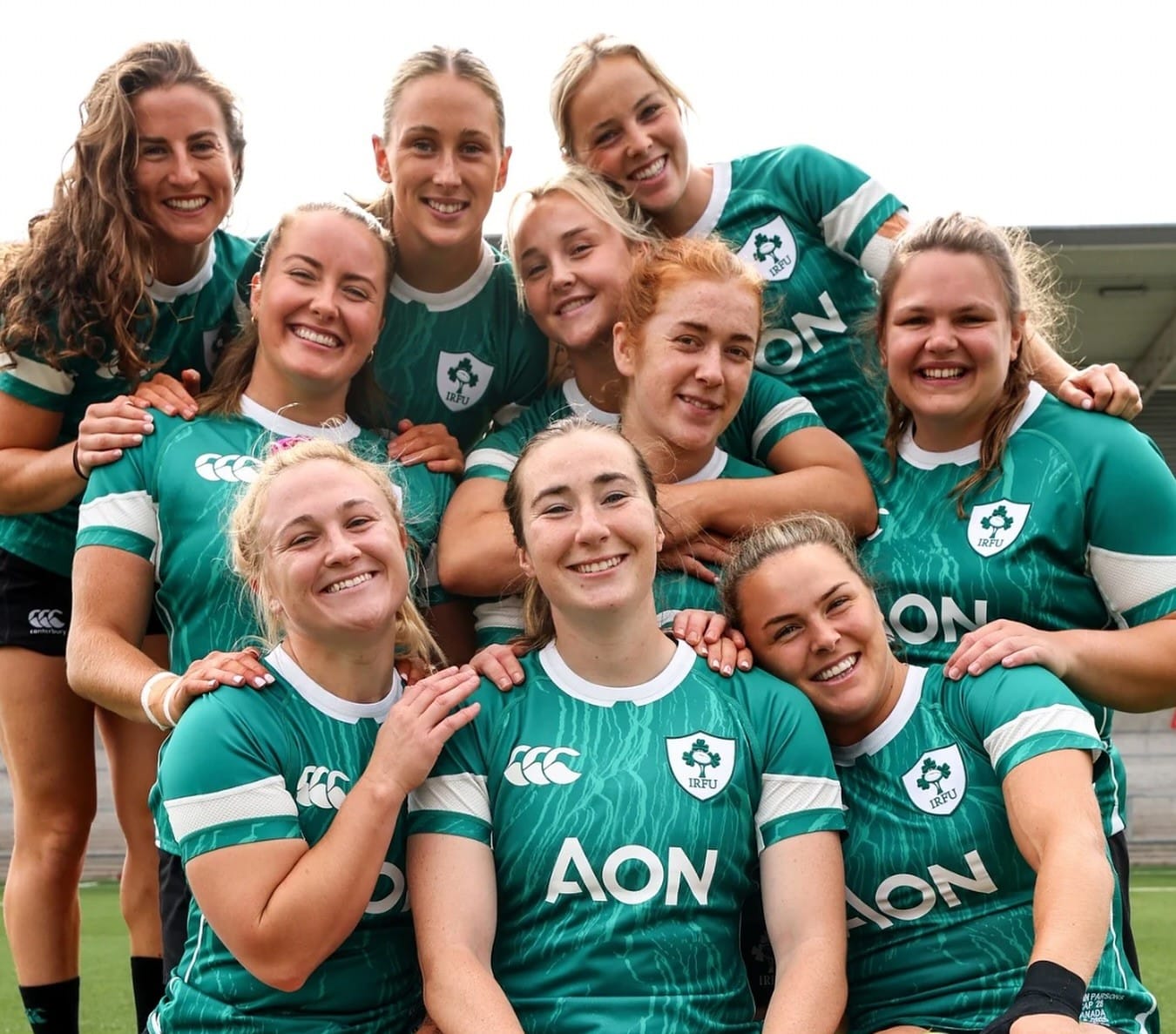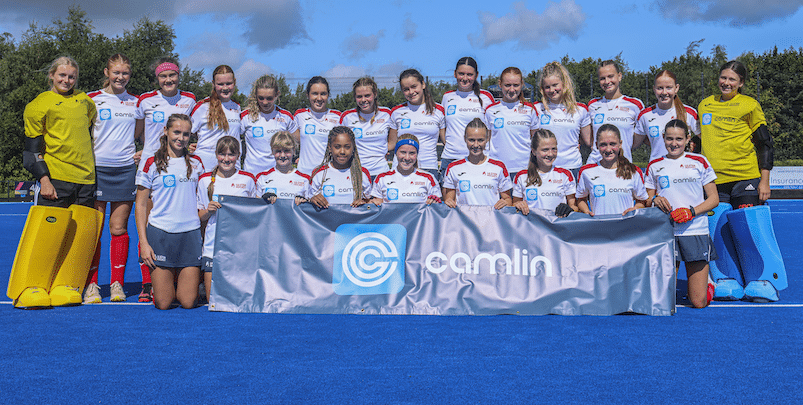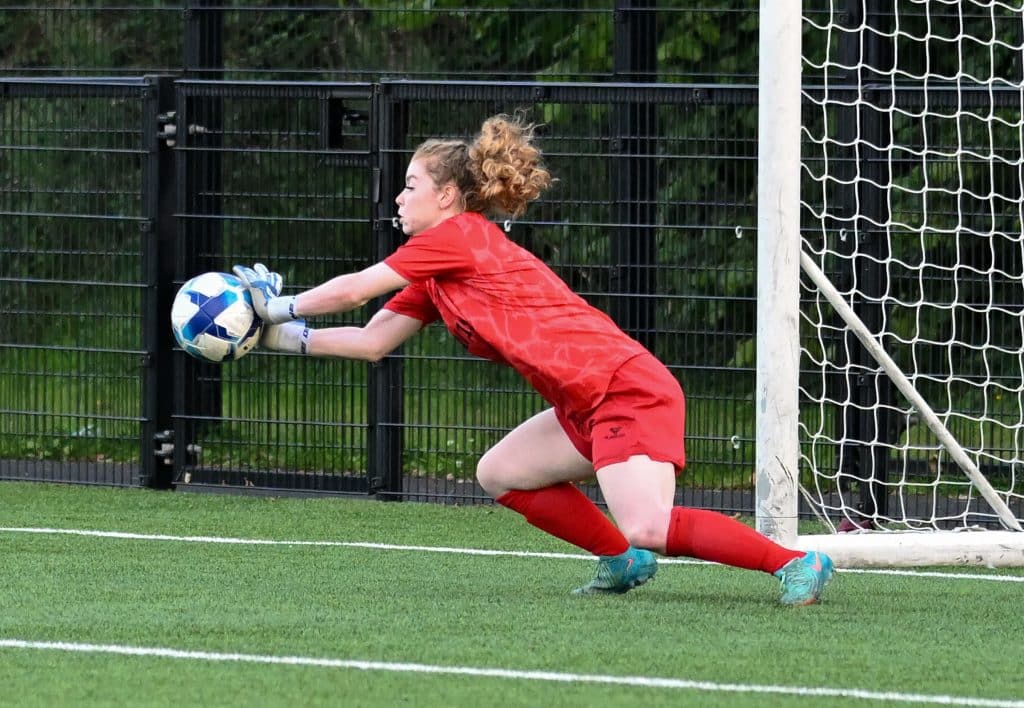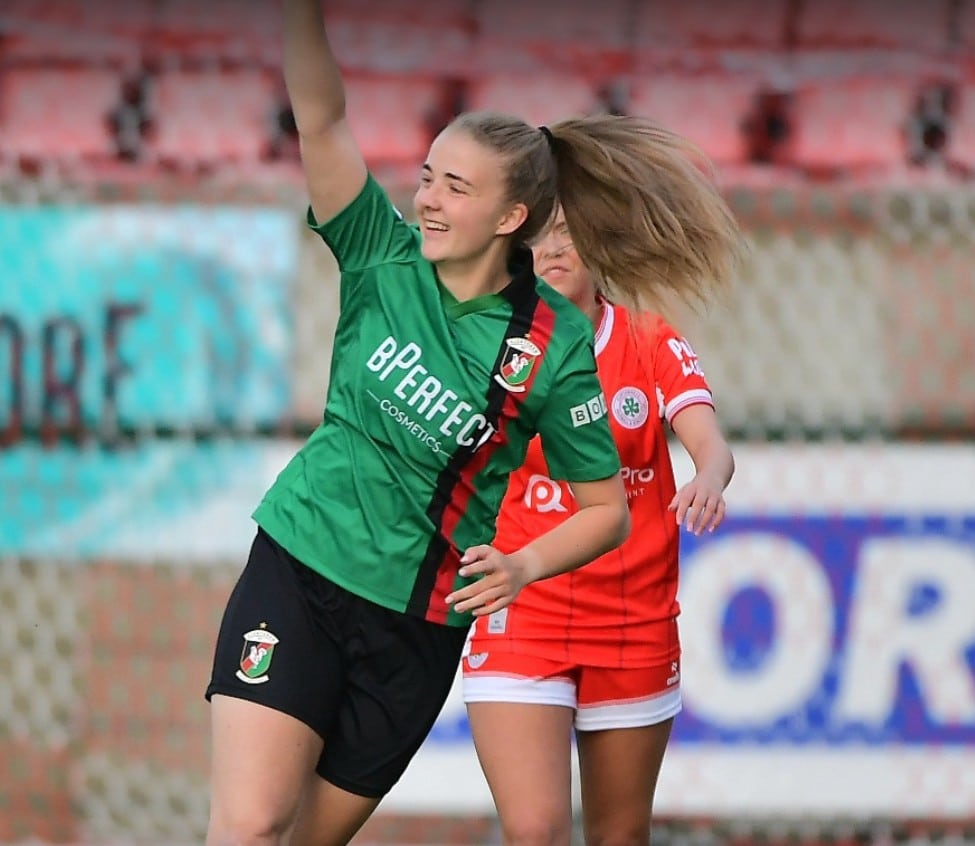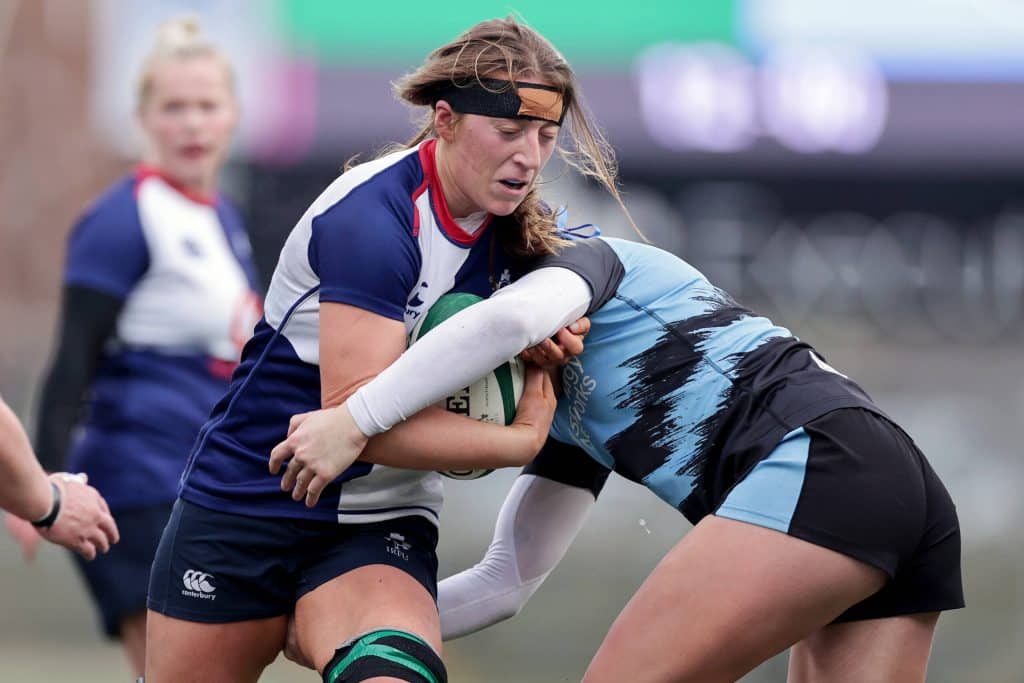
BY RICHARD BULLICK
THE use of alphabetical order and going with the forwards first meant Fermanagh flanker Claire Boles and the only uncapped player selected, teenager hooker Beth Buttimer, were the first faces featured in the spectacular unveiling of Ireland’s World Cup squad.
Paris Olympian Boles, whose home club is Enniskillen RFC, is one of four Ulster players among Ireland’s 18 forwards in addition to Ballymena native Neve Jones of Gloucester Hartpury, while Tipperary-born Buttimer’s mother Suzanne actually hails from Carrickfergus.
On Monday morning, the IRFU revealed the identities of the 32 women chosen for this summer’s tournament with a wonderfully emotive video showing each player in their World Cup jersey juxtaposed with an image of them in earlier life.
The player reveals were interspersed with bits of footage from this team’s resurgent journey over the past couple of years under Scott Bemand, with the late Irish singer Dolores O’Riordan’s ‘Dreams’ as the fitting soundtrack.
Boles and Buttimer were two of the big winners in a squad announcement which was along largely predictable lines, with both benefiting from the omission of dynamic Munster utility forward Deirbhile Nic a Bhaird who has appeared effectively out of favour for some time.
In that regard, Nic a Bhaird’s absence could be described as somewhat shocking – given Ireland’s injury issues in the back row and her potential to double up as the third hooker never mind all-round ability – but not necessarily surprising.
With World Rugby’s Breakthrough Player of the Year Erin King and formidable back five forward Dorothy Wall both ruled out of the tournament through injury, Bemand was sweating on the fitness of taliswoman Aoife Wafer and co-captain Edel McMahon.
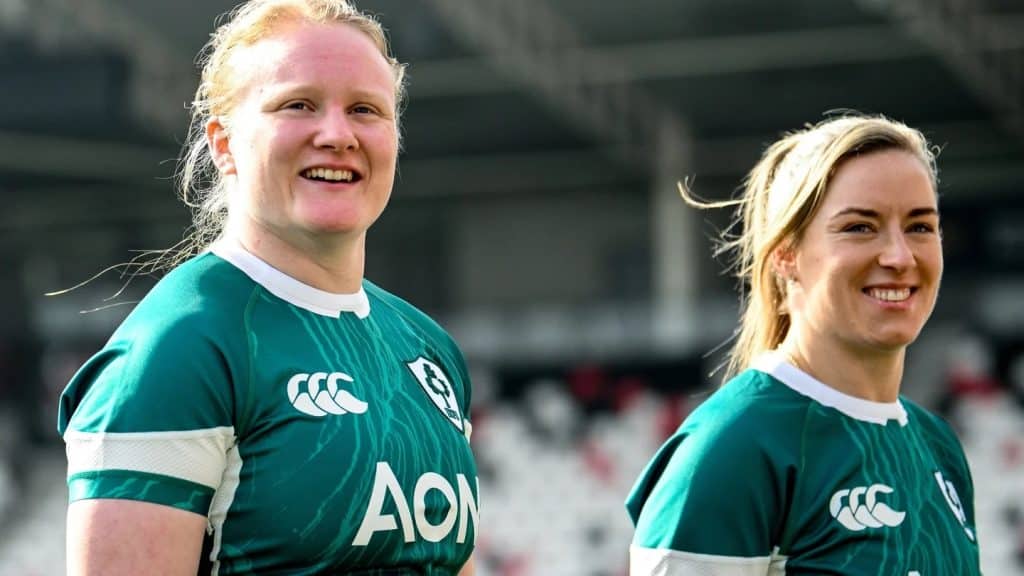
Co-captain Edel McMahon (right) and taliswoman Aoife Wafer have won their World Cup fitness races
Wafer faced a race against the clock to be fit for the World Cup after needing a procedure on her knee while a niggling injury kept McMahon from featuring in both warm-up matches, the victory over Scotland in Cork followed by the Belfast loss to Canada at the weekend.
Thankfully both back row forwards were able to be named in Bemand’s squad, which will fly out from Dublin this Friday for the tournament in England, though whether Wafer is ready for Ireland’s opening group game against Japan in Northampton on Sunday week remains to be seen.
Exeter Chiefs flanker McMahon and this spring’s Guinness Six Nations Player of the Championship Wafer are among six loose forwards included along with Ulster powerhouse Brittany Hogan, Grace Moore, Boles and the inexperienced Ivana Kiripati.
New Zealand-born Connacht back-rower Kiripati, who has been studying in the United States and just turned 22 this month, only won her first cap in the opening World Cup warm-up match against Scotland in Cork and donned the No7 jersey again for the Canadian clash.
Ireland boss Bemand has long been an admirer of the youngster, however, and Kiripati is one of three players in this squad who hadn’t been capped before this summer along with recent introductions from England, Nancy McGillivray and Ellena Perry.
Former England prop Perry, who last played for the Red Roses five years ago and qualifies for Ireland through ancestry, effectively comes in for experienced campaigner Christy Haney, heartbreakingly ruled out by a relatively short-term hamstring problem.
Missing out on the World Cup is a devastating blow for affable American-born Haney, who has been such a stalwart for her grandmother’s homeland over recent years but also missed Ireland’s memorable WXV1 campaign last autumn through injury.
There has been mild media and public backlash about the decision to parachute in someone who has played for another nation, especially so close to the tournament, but Bemand previously worked with Perry in the English set-up so she wasn’t an unknown quantity.
It isn’t known whether Ireland would have gone down the Perry route had Haney’s injury not become such an issue, either potentially taking her as a sixth prop or at the expense of one of the tight group of five who have been in camp all summer.
Neither English-based Andrea Stock, who won her first caps off the bench in Vancouver last autumn, nor powerful Ulster tighthead Sophie Barrett, who was one of six props in that WXV1 squad, have been involved in Ireland’s World Cup preparation camps this summer.
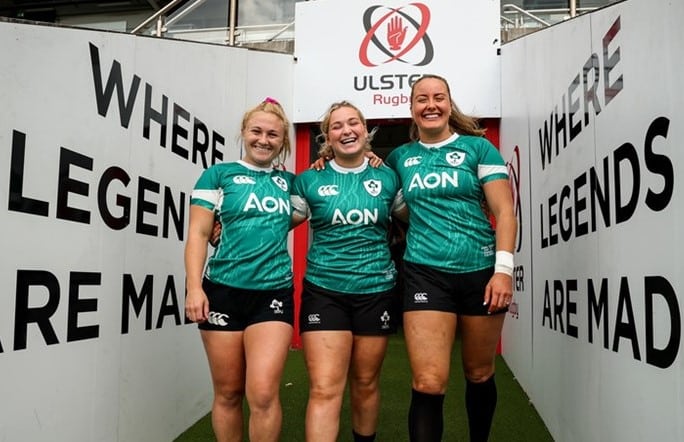
Thanks to Perry popping up from left field, flame-haired Fermanagh forward Barrett hasn’t benefited from Haney’s misfortune, whereas an unexpected path opened up perfectly for her Ireland Under 20s front row colleague Buttimer late in the day.
The abrasive Buttimer, who has played plenty of adult rugby for Munster and Clovers as well as her club UL Bohs, was a travelling reserve for Ireland during this spring’s Six Nations but was left out of the World Cup preparation squad in favour of fit-again Sarah Delaney.
First capped by Bemand aged just 18 at the WXV3 tournament in Dubai two autumns ago, Delaney needed ankle surgery last autumn and, although initially expected to be back by the end of January, complications meant she missed the end of the season.
Unfortunately for the likeable Kildare youngster, she sustained a shoulder injury recently which has required surgery, meaning Munster firebrand Buttimer was summoned into camp followed by being named in the World Cup squad exactly a week before turning 20.
With Ulsterwoman Neve Jones and Cliodhna Moloney-McDonald – the only player around now with previous World Cup experience – such central figures in this squad, Bemand’s other option was to just take two hookers with Nic a Bhaird providing cover.
But there was a sense that Cork native Nic a Bhaird’s face didn’t fit, for whatever reason, as she was overlooked during the Six Nations even when Ireland were without other established back five forwards due to injury.
Her experience could have proved very valuable if both McMahon and Wafer weren’t fit for the start of the tournament but Bemand has instead decided to go with Celtic Challenge title-winning Wolfhounds skipper Boles and rookie Kiripati.
Tackling machine Boles had come off the bench in the last two matches of this spring’s Six Nations, away to Wales and Scotland in late April, and seemed a reasonable bet to benefit from the injury-enforced absence of the stricken King.
But there was confusion over her status this summer due to Boles not being included in Ireland’s initial World Cup preparation panel, though she wasn’t named in the Ulster squad either and photos of her in a knee-brace suggested those absences were injury-related.
Utility forward Faith Oviawe and her teenage Connacht colleague Ailish Quinn – capped off the bench against Scotland this month – were officially added to the Ireland training squad for the second block of pre-season training but there was no mention of Boles.
However, like Ireland Under 20s captain Jane Neill earlier in the summer, Boles was subsequently spotted in photos of training at Abbotstown and the Lisbellaw woman came off the bench against Canada to win her sixth cap.
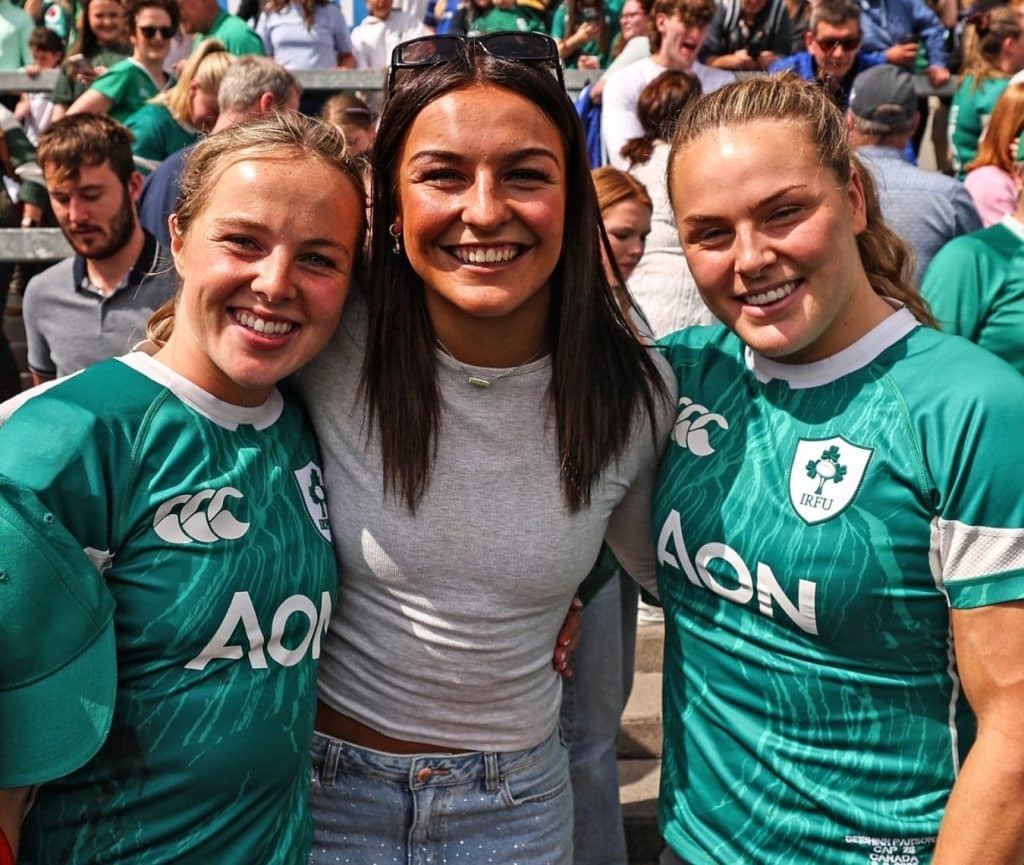
Injured Erin King won’t be joining buddies Aoibheann Reilly (left) and Beibhinn Parsons on the plane
Jane Clohessy, who had won her first cap as a replacement against Scotland in Edinburgh at the end of the Six Nations, was released back to Munster last week ahead of the opening interpro and thus known to be out of the reckoning before the squad was publicly named.
Along with Nic a Bhaird and Clohessy, the other back row forward who was there throughout the summer but won’t be going to the World Cup is New Zealand-born Shannon Ikahihifo of Ealing Trailfinders, who won her first Ireland caps in last year’s Six Nations.
There may have been some doubt whether Bemand would take four specialist locks to the World Cup, or seek to replace Wall with another hybrid back five forward, especially if a rehabbing Wafer was being carried at the start of the tournament.
Joint skipper Sam Monaghan was always certain to return if fit having been sidelined since rupturing her cruciate in the first half of last summer’s English Premiership final for Gloucester Hartpury, with her comeback delayed by knock-on niggles.
Wall’s alternating second row partners this past season in Monaghan’s absence, young Ruth Campbell and Ulster’s Fiona Tuite, had put significant credit in the bank, so the pressure was on another player returning from injury, Eimear Corri, to prove herself afresh.
Having handed Corri her first caps at WXV3 in Dubai, Bemand is a fan of the Leinster lock and her ex-winger’s pace as a point of difference, but she was out of the picture for all Ireland matches last season after rupturing her achilles in the interpro final.
The alternative was to treat the versatile Moore as a fourth lock or select Clohessy to cover both rows where needed but instead the Ireland supremo has opted to back the class of the now Dr Corri-Fallon, who got married in May.
The hospital doctor did a good 80-minute shift against Scotland in her first match back since the injury at the end of last August and came off the bench in the Belfast send-off fixture, where Tuite was deployed at blindside flanker for the second half against Canada.
Balbriggan’s giant teenager Alma Atagamen took part in Ireland’s first pre-season camp before going off to Wales with the Under 20s for the Six Nations Summer Series and, although not a realistic contender this time, she is a real prospect for the future.
Perry coming in for Haney leaves Ireland’s slate of five props a little less balanced given that she joins Niamh O’Dowd and Siobhan McCarthy as specialist looseheads, leaving just Linda Djougang and young Ulsterwoman Sadhbh McGrath to share the load at tighthead.
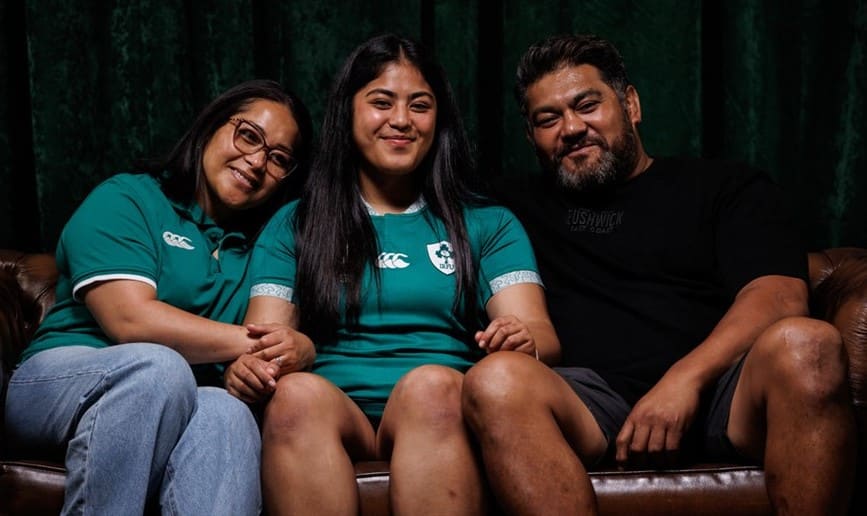
With no injury complications, Munster fullback Aoife Corey cut already and newcomer McGillivray looking likely to be brought at the expense of another specialist winger, the identity of Ireland’s 14 backs seemed set in stone ahead of the squad announcement.
And in that context, there were no surprises, with ex-Connacht captain Nicole Fowley, who didn’t get any game-time in either warm-up match, being brought as the squad’s second specialist outhalf even though Enya Breen is likely to cover Dannah O’Brien within the 23.
Although Munster young gun Kate Flannery was called up for this summer’s second camp there was no realistic chance of her or rising star Caitriona Finn – not involved during the preparation period – usurping Fowley as second choice outhalf at this stage.
The unlucky Corey was already resigned to losing out to Meabh Deely as Stacey Flood’s fullback understudy even though she wore the No 15 jersey on debut in Edinburgh in the last Six Nations game and was included in the initial World Cup preparation panel.
By contrast, the more experienced Deely – who hadn’t featured for Ireland since the day they beat Scotland at the end of the 2024 Six Nations to qualify for this World Cup – was just named as a training partner rather than one of the 15 core backs at that stage.
But by the time this month’s opening warm-up match came around, Corey had already been let go and the slightly enigmatic Deely played all 80 minutes, with a well-taken try offsetting some suspect positioning in the early stages compounded by a few fumbles.
At the start of the summer, it had felt like Ireland’s seven three-quarters for the World Cup would be comprised of three specialist wingers and three recognised centres supplemented by the versatile Anna McGann.
A little surprisingly, Paris Olympian Vicky Elmes-Kinlan seemed to have leapfrogged her fellow Wicklow woman Katie Corrigan – scorer of a try in each of Ireland’s three home matches in the 2024 Six Nations – in the pecking order out wide.
Corrigan wasn’t called back to camp after featuring for Ireland Under 20s in last month’s Six Nations Summer Series in Wales, so the writing was on the wall for her early, but in the end Elmes-Kinlan missed out on a squad spot too.
Both lost out to McGillivray, the Exeter Chiefs centre with an Irish father and Thai mother, who was on an RFU contract until the end of June and part of the extended England squad before switching her allegiance to Ireland.
McGillivray made her debut at outside centre against Scotland at the start of this month, scoring a fairly routine try in Ireland’s comeback victory at Virgin Media Park, and now finds herself included in the World Cup squad.
Her arrival late in the piece won’t necessarily sit well with everyone and Ireland already have three excellent centres in Breen, Eve Higgins and Player of the Year Aoife Dalton, but once she was in the mix it isn’t too surprising that she has ended up in the World Cup squad.
With the unlucky Corrigan gone from the reckoning, Bemand’s alternative was to take Elmes-Kinlan, who wasn’t particularly convincing when handed a start against Scotland in Edinburgh at the end of the Six Nations.
Additionally, given the fantastic competition there already is for game-time out wide between McGann, wing wizard Amee-Leigh Costigan and fit-again star turn Beibhinn Parsons, it was unlikely Elmes-Kinlan would have made it onto the field during the World Cup, barring injury.
McGillivray may not either unless she can displace Dalton from the No 13 jersey given that the adaptability of both Breen and Higgins guarantees them a place in Ireland’s matchday squads, but Bemand has a record of liking extra centre cover.
He took the uncapped Katie Heffernan, who has since retired from rugby, to WXV1 last autumn as back-up to Dalton, Higgins and Breen in a squad containing just four back three players in Flood, the then Amee-Leigh Murphy-Crowe, Eimear Considine and Elmes-Kinlan.

Eimear Corri-Fallon, pictured with Tommy Bowe, is back in the Ireland squad after a long injury lay-off
Deely, Corrigan and Natasja Behan were out injured at that time, but Bemand opted to bring Heffernan rather than another winger, likely either of the uncapped pair from Munster, interpros top try-scorer Alana McInerney or Chisom Ugwueru.
Ireland have a trio of useful scrumhalves in Molly Scuffil-McCabe, Aoibheann Reilly and Emily Lane and, as expected, Bemand is taking all three to the World Cup where more difficult decisions will lie ahead regarding who starts and who gets the bench berth.
Seven of this squad of 32 play their rugby for English Premiership sides – three each for champions Gloucester Hartpury and Exeter Chiefs plus Moore of Ealing Trailfinders – with 10 Leinster players, six Connacht, five Munster and an Ulster quartet.
That is based upon treating Westmeath woman McGann as Connacht, while Clare native McMahon would be regarded likewise – she represented the western province ever since taking up rugby as a student in Galway – if we distribute the exiles to specific provinces.
Monaghan is from Meath so swells the Leinster contingent, Jones joins an Ulster contingent which includes Tuite due to the fact that she wears the white jersey at provincial level, and Galway woman Moloney’s home province is Connacht.
Despite their Irish roots, we haven’t tried to assign Moore, McGillivray and Perry to particular provinces, but the great geographic spread in this squad is reflected in the fact that the other 29 players represent no fewer than 19 different counties.
In terms of clubs, of the 25 home-based players, Blackrock lead the way with eight representatives, Old Belvedere supply seven and Railway Union six with one player apiece from back-to-back AIL champions UL Bohs, Belfast side Cooke, Galwegians and Creggs.
Another brilliant thing that the IRFU did a few hours after the squad announcement was issue a set of photos with the players proudly wearing the colours of the local club, university or even, in Flood’s case, school where they started their rugby journey.
Such thoughtful gestures help ensure that this ‘Green Wave’ really can be the tide which lifts all Irish rugby boats and there were also poignant portrait shots of the players taken which help reflect who they are.
The series of images included players accompanied by parents, partners, pets, siblings, a range of sporting props such as gaelic football jerseys, and also photos of family members, loved ones or cherished successes from their formative years.
The now Moloney-McDonald since her marriage to England winger Claudia McDonald this summer – ironically her fellow hooker Jones’ partner Bethan Lewis is part of the Wales squad – is the only one of these 32 players to have trod the World Cup path before.
Bemand’s squad has a good age profile, with half being in that 25-29 bracket, supplemented by five over the age of 30, while the current total of 10 in their early 20s will increase next week thanks to current teenager Buttimer’s birthday.
Born just before Christmas 1992, Fowley is the oldest player in the squad followed by fellow 32-year-olds Moloney-McDonald and Monaghan with the others to have entered their fourth decade being the latter’s fellow co-captain McMahon and Costigan.
Above Buttimer, the second youngest player is McGrath, who turns 21 later this month, while O’Brien becomes 22 at the World Cup and a further four players – Kiripati, Campbell, Dalton and Wafer in order of ascending age – were also born in 2003.
It will make many of us feel old that no fewer than 14 of this World Cup squad – so not far off half – were born since the turn of the millennium but combined with the talent now being produced by the improved pathway, that augurs well for the future of Irish women’s rugby.
A couple of years ago, the Ireland squad was very inexperienced with an unhealthily low number of caps, but now even some of the younger players like O’Brien and Dalton have a significant amount of international rugby under their belts.
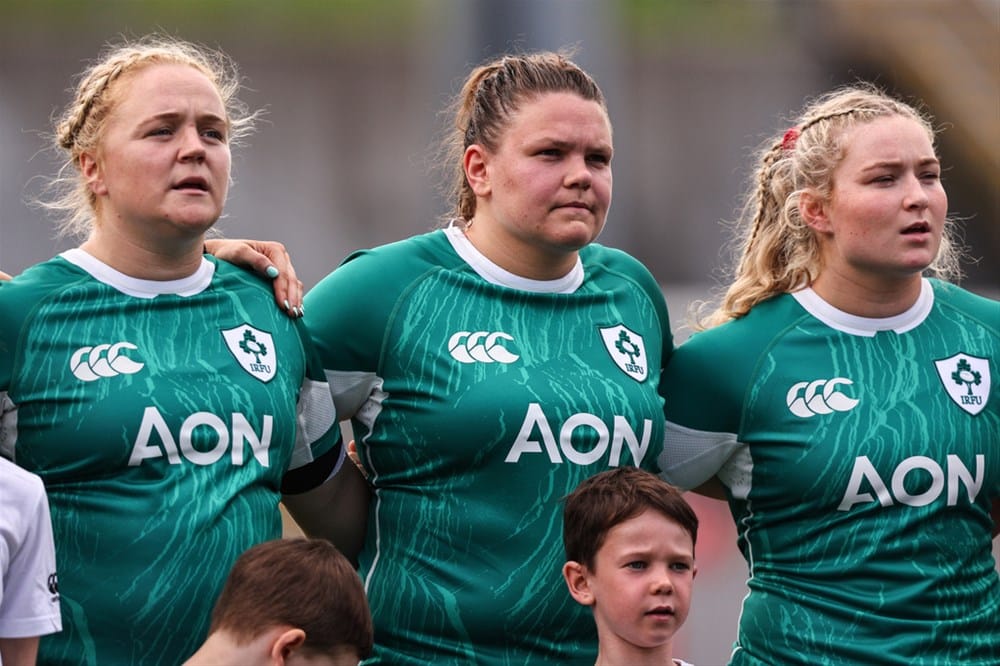
The most capped player is Djougang, who should make her 50th appearance against Spain in the second group game, barring injury, with Moloney-McDonald in line to reach the same milestone if Ireland get through to the semis.
Ulsterwomen Jones and Hogan, along with McMahon and Breen have over 30 caps to their name with Higgins, Parsons and O’Brien having attained the quarter-century mark and Dalton poised to join them if selected for the opening game against Japan.
The cap tally of several players would obviously be higher but for their years spent prioritising sevens and Bemand’s squad for the World Cup contains six Paris Olympians from last summer in Costigan, Flood, Higgins, Parsons, Lane and Boles.
Co-captains McMahon and Monaghan have been in place since the start of the Bemand era and are backed up by a well-developed leadership group, three of whom have been stand-in skipper during the past year.
Breen captained the team for the final two matches at WXV1 last autumn, Costigan did the job a couple of times during this spring’s Six Nations and Jones had the honour for the final warm-up match against Canada in Belfast last weekend.
Higgins and Hogan have both served in a vice-captain capacity during Bemand’s time in charge, the youthful O’Brien is used to calling the shots from outhalf, Dalton is Ireland’s de facto ‘defence captain’ while the world-class Wafer is a real taliswoman.
Incidentally, Wolfhounds skipper Boles and her vice-captain Dalton are among 11 of this squad to have featured in that successful Celtic Challenge title defence last season, while Clovers captain Breen and deputy Costigan head a contingent of 13 from the runners-up.
Bemand, who was at two women’s World Cups as England assistant, heads a coaching group which includes Larissa Muldoon, who played for Ireland in the 2014 and 2017 editions, Alex Codling, James Scaysbrook, Denis Fogarty and Ulsterman Gareth Steenson.
Ireland’s World Cup opener is against Japan on Sunday week in Northampton and they face Spain back at Franklin’s Gardens seven days later knowing two wins would clinch quarter-final qualification ahead of the Brighton showdown with world champions New Zealand.
If Ireland reach the knockout stages courtesy of finishing in the top two in Pool C, they would face a quarter-final in Exeter the second weekend of September, most likely against France or fellow Six Nations rivals Italy.
From now on, it will be all about those selected but for now spare a thought for the quartet denied by injury – King, Wall, Haney and Delaney – along with those who just missed out and players like Munster skipper Maeve Og O’Leary who will wonder what might have been.
IRELAND WORLD CUP SQUAD (backs): Stacey Flood, Meabh Deely, Amee-Leigh Costigan, Beibhinn Parsons, Anna McGann, Nancy McGillivray, Aoife Dalton, Eve Higgins, Enya Breen, Dannah O’Brien, Nicole Fowley, Molly Scuffil-McCabe, Aoibheann Reilly, Emily Lane; (forwards): Niamh O’Dowd, Siobhan McCarthy, Ellena Perry, Sadhbh McGrath, Linda Djougang, Cliodhna Moloney-McDonald, Neve Jones, Beth Buttimer, Ruth Campbell, Sam Monaghan (co-capt), Eimear Corri-Fallon, Fiona Tuite, Grace Moore, Brittany Hogan, Aoife Wafer, Ivana Kiripati, Edel McMahon (co-capt), Claire Boles.
